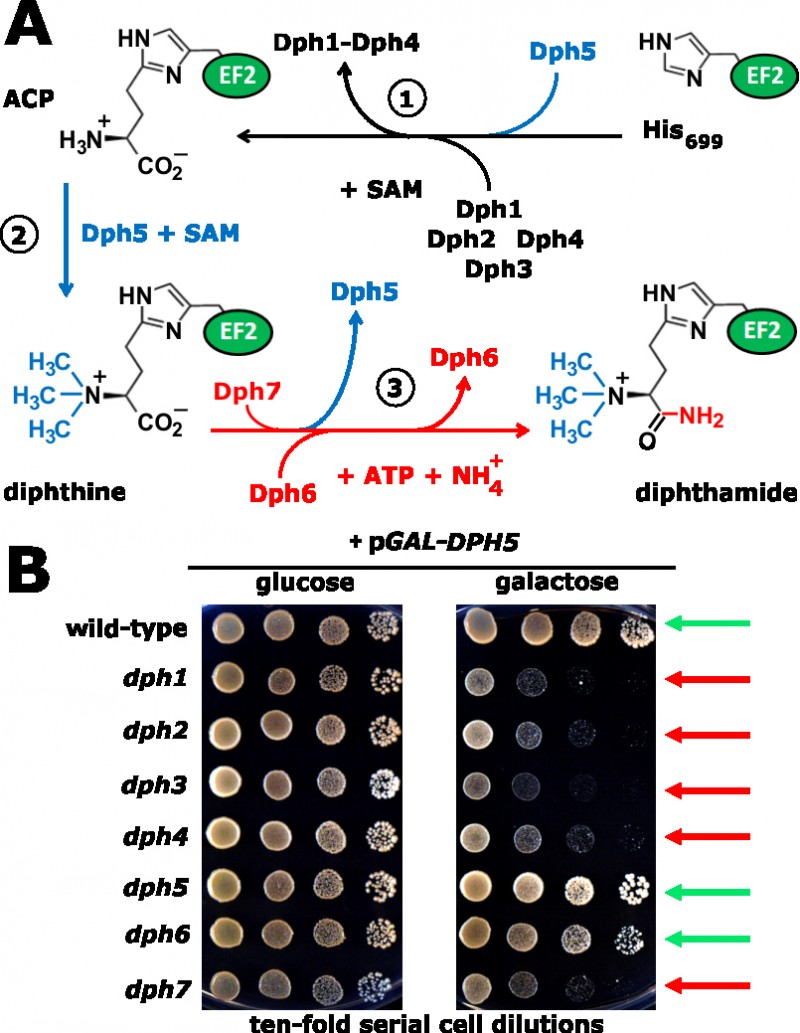FIGURE 1: The diphthamide synthesis pathway of budding yeast and growth-related traits of diphthamide mutants in response to excess levels of diphthine synthase Dph5. The illustration incorporates evidence from the study of Uthman et al. [PLoS Genetics (2013) 9, e1003334] on novel roles for Dph6 and Dph7 in diphthine amidation, Dph7-dependent dissociation of Dph5 from EF2 and DPH5 overexpression toxicity.
(A) The diphthamide pathway. For early roles played by Dph1-Dph5 in the pathway steps 1 & 2, see text. The formerly ill-defined step 3, conversion of diphthine to diphthamide by amidation, is highlighted (red label). It involves ATP and ammonium cofactors in a reaction catalysed by Dph6 and regulated by Dph7. The latter is involved in displacement of Dph5 from EF2 prior to amidation thus coupling steps 2 & 3 of the pathway.
(B) DPH5 overexpression toxicity. Galactose-inducible DPH5 overexpression (pGAL-DPH5) (right panel) hardly affects wild-type, dph5 or dph6 cell growth (green arrows) but is inhibitory to the growth of step 1 (dph1-dph4) and step 3 (dph7) pathway mutants (red arrows). Glucose repression (left panel) served as a growth control reference. Abbreviations: ACP, 2-[3-amino-carboxyl-propyl]-histidine; SAM, S-adenosylmethionine.

